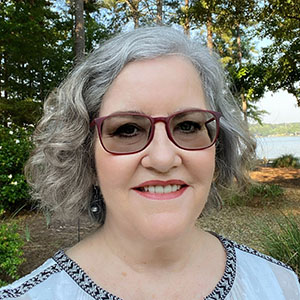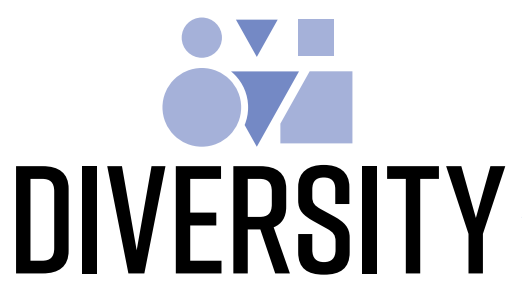Perspectives about diversity have certainly evolved over the decades. When people ask me about my thoughts on diversity, I often need to pause and reflect on various stages of history. The interesting thing is that definitions of diversity have morphed over time based on society’s mores.
My background has influenced my perspectives about diversity. I grew up in the Rocky Mountains at a time when there was not a lot of exposure to ethnic or religious diversity. I was in the field of engineering in the late 1970s when the gender ratio was less than 5% women. Fortunately, I was a member of a sorority, which contributed to significant life lessons about diversity. It expanded my perspective to include individuals with a wide range of demographics and values, and I am proud to say that my sorority sisters remain an important part of my life today and continue to challenge my thinking.
Following college, I entered the construction industry, where the gender ratio for technical professionals was not much different. I was the only woman in various business and trade association meetings for many years. I honestly did not focus on the fact that I was in a minority; I sought out individuals I respected and learned professional protocol from them.
During the 1990s and 2000s, I found myself in many awkward circumstances that seem unimaginable in today’s business environment. From being the focus of off-color comments at meetings and challenged on construction sites based on gender, to announcements at industry conferences asking the women to leave so “the gentlemen” could proceed with the business activities, I made a commitment to reshape the perspective and credibility of women in the construction industry and the IES. It took 79 years, but Rita Harrold broke the glass ceiling, becoming the first female president of the IES in 1985. Since then, there have been six women to serve as the Society’s president.
I am proud to say that with support from my colleagues and family, I have achieved many important recognitions while working to break gender bias. I became the first female vice president of Lithonia Lighting in 2000, followed by other important honors in the IES and industry trade associations.

So how do we promote change? I classify actions to raise awareness for the importance of diversity into three categories.
1. Silence. This is the easiest course of action—just focus on being your best self, hoping that is enough to be recognized and promote change. Unfortunately, this action allows narrow mindsets to continue unchallenged and impedes progress for change. It also takes away from being your authentic self, causing more frustration, doubt and stress. My call to action is do not be silent—it stalls change and breaks down your self-worth.
2. Be vocal. Unfortunately, if not managed with diplomacy, this action can often be perceived as anger and cause the offenders to become more defensive and closed-minded. Sometimes this may be an appropriate action based on specific situations, but keep in mind that unintended consequences can create a perspective that vocal minorities are “troublemakers” or “not team players.” I generally suggest using this technique with caution. But when managed appropriately, this technique can help expedite change. In the words of the late politician John Lewis, “Get in good trouble, necessary trouble.”
3. Be a diplomate for change. I encourage this approach in most situations; it requires you to be inquisitive, respectful and professional. When confronted with an offensive situation, I step back and question what would cause this to happen. Every individual has a unique history and experiences. When I ask questions, I gain a better understanding about diversity. Until we understand the cause of individual actions, we cannot promote change.
What did diversity mean to me 10 years ago? Much progress had been made for certain demographics, such as women. But understand that progress is a journey, not a point in time. A decade ago, diversity was recognized but perhaps not fully embraced. It was often feared based on the need to change the status quo. At that time, the focus on diversity related to ethnicity, religious beliefs or sexual orientation was very lacking.
What does diversity mean to me today? I am proud of the efforts by the IES to bring more attention to a broader focus of minority groups. The IES Diversity, Equity, Inclusion and Respect Committee has made outstanding progress in education and awareness—not just focused on individuals but the need to address disadvantaged communities and the built environment. More businesses are committed to diversity priorities as it relates to their employees and customers, but they are also supporting social good within their communities. In the words of the late businessman and proponent of sustainability Ray Anderson “…there is no more strategic issue for a company, or any organization, than its ultimate purpose. For those who think business exists to make a profit, I suggest they think again.
Business makes a profit to exist. Surely it must exist for some higher, nobler purpose than that.” And as the spouse of a Vietnam veteran, it means so much to me to witness a shift in respect for our military personnel and veterans, promoting more support for them and their families.
What is my perspective on diversity 10 years from now? While much has been accomplished, we are honestly still in an infancy stage for change. It is my hope that each of our IES Members focus on respect and understanding as a foundation to expand the impact of change. I look forward to a day when we do not have to focus on diversity because respect and understanding are universal, without question. I know this sounds cliché, but when we allow noble priorities to drive our decisions and actions, singling out special interests is irrelevant.
I challenge you to be a diplomat for continuous change. Go forward with curiosity and put yourself in new situations to expand your understandings. Approach all situations, personal and professional, with diplomacy and respect.
Cheryl English, Fellow IES, is a retired lighting manufacturing executive with experience in public policy, marketing, engineering and testing labs. She is a past president of IES and a Louis B. Marks awardee.


